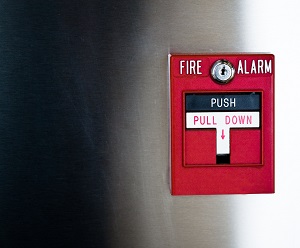
Every campus needs to balance the needs of its stakeholders with common sense. With no end in sight to the COVID-19 pandemic, this crisis has made the security of all campuses even more of a priority. After all, keeping unwanted visitors out can help contain the spread of the infection and make contact tracing easier to perform. However, one aspect of safer schools that cannot be ignored is fire safety.
Traditional Design and Planning Protocols
First of all, we need to talk about traditional design principles and planning protocols that have long guided the decision-making process of school districts and individual administrations. As important as life safety and fire safety are, facility design and emergency response procedures often do not acknowledge that eventuality. Most security controls are meant to avoid blocking entrances and exits or get in the way of first responders. That’s why both design principles and planning considerations must keep up with the times, and you can rest assured that the times are changing.
Responding to Changing Threats
Next up, we should discuss proper responses to ever-changing threats to campus life. Disruptions such as fire drills and lockdown rehearsals may be onerous, but that doesn’t downplay the urgency with which they are needed. Active shooters and potential terror incidents are more frequent than ever before and schools at all levels need to be able to react in real-time to protect all of their community members. After all, fire alarms, smoke detectors, and other fire protection systems can be twisted in sinister ways so that they can be used for malice instead.
Behavioral and Physical Science
Behavioral sciences are the bedrock of all security planning and technological systems. Meanwhile, fire safety and life safety measures are arranged around the concept of physical science instead. The most common fire protection systems include fire alarms, smoke alarms, fire extinguishers, sprinklers, and FireStop technology. Protecting first responders and protecting assets and infrastructure is also just as important.
Use of Mass Notification Systems
Mass notification systems are crucial to ensure that emergency situations are contained and everyone involved is kept informed and safe. Telling everyone what they need to know when it’s time to evacuate will make the process easier and less stressful; at the same time, it makes everything less dangerous and confusing when the real scenario happens.
A Reasonable Approach
Make sure that you identify all potential threats and security flaws that can affect your campus. Newer facilities can take advantage of more advanced tech that facilitates alarm triggering, evacuations, suppressions, fire monitoring systems, and emergency alert networks.
Using PSIM Software
Finally, do not hesitate to integrate PSIM software into your fire safety system. PSIM stands for Physical Security Information Management; it is both a platform and a host of apps that can help currently un-linked security systems and assets communicate with one another.
Trust the Professionals at ARK Systems
Located in Columbia, Maryland, ARK Systems provides unsurpassed quality and excellence in the security industry, from system design through to installation. We handle all aspects of security with local and remote locations. With over 30 years in the industry, ARK Systems is an experienced security contractor. Trust ARK to handle your most sensitive data storage, surveillance, and security solutions. Contact ARK Systems at 1-800-995-0189 or click here today. Check us out on Facebook and Twitter as well!
